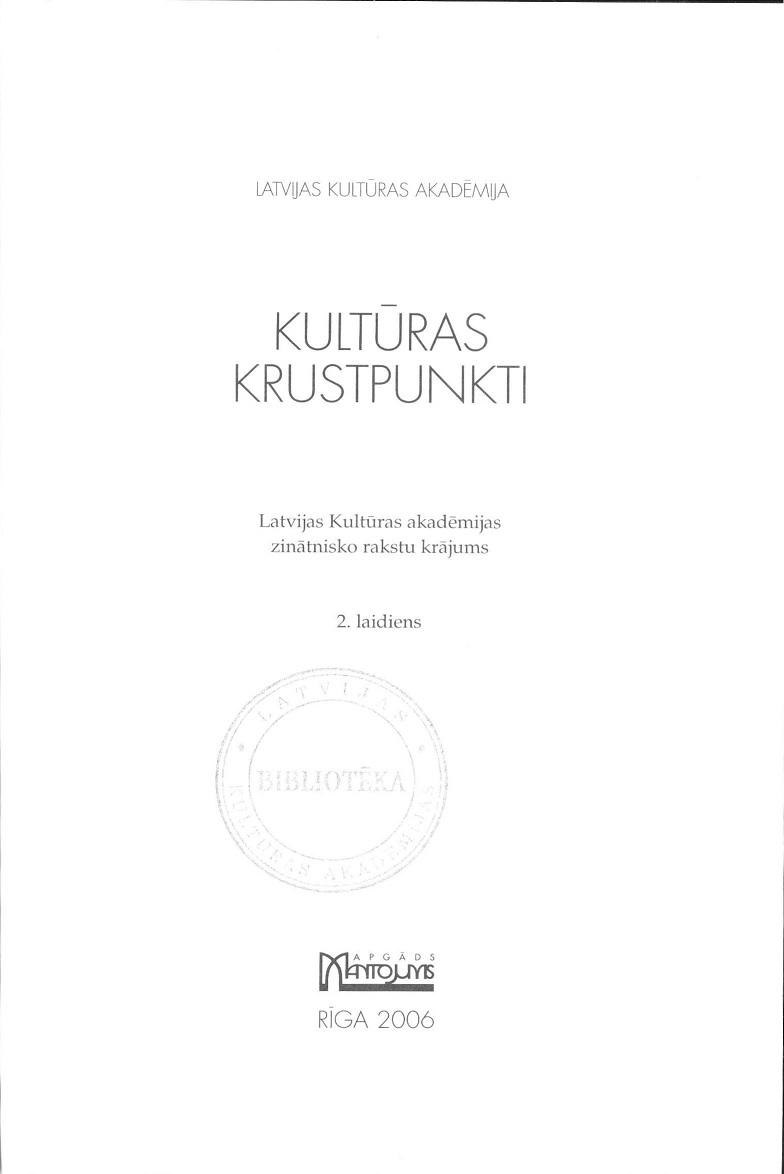Mītisko tēmu interpretācija mūsdienu operas režijā. R. Vāgnera operas "Klīstošais Holandietis" un A. Rubinšteina operas "Dēmons" iestudējumi Latvijas nacionālajā operā
Interpretation of Mythical Themes in Contemporary Opera Direction. Staging of R. Wagner's Der fliegende Hollander and A. Rubinstein's Demon at the Latvian National Opera
Author(s): Ingrīda VilkārseSubject(s): Theatre, Dance, Performing Arts, Music, Semiology, Aesthetics, Culture and social structure , Sociology of Culture
Published by: Latvijas Kultūras akadēmija
Keywords: Mythical themes; contemporary opera; Anton Rubinstein; Richard Wagner; music style; performance; dramaturgy; Latvian National Opera;
Summary/Abstract: In this article I have analyzed two opera stagings at the Latvia National Opera in 2003, which have been produced by Director Andrejs Žagars: Der fliegende Hollander, opera by Richard Wagner (premiere at February 5, 2003), Musical Director and Principal Conductor Gintaras Rinkevičius, Set Designer -Andris Freibergs, and in the leading parts: Dutchman - Egils Šiliņš, Senta - leva Kepe; and Demon, opera by Anton Rubinstein (December 14, 2003), Musical Director and Principal Conductor - Normunds Vaicis, Set Designer - leva Kauliņa, and in the leading parts: Demon - Egils Šiliņš, Tamara - Tatiana Monogarova. In this paper, two conjunctive aspects of opera staging have been examined -use of romantic literature for the libretto and the musical style of late romanticism; also, characteristic differences in the direction methods in the course of staging have been marked. The showgrounds in both performances have been created as mythical, endless spaces, implying visual, theatrical philosophy, with an associative expression of time and space - thus, creating the stage design dramaturgy of performances. Librettos of these operas are permeated with mysticism, images of the fantasy world, which merge with the real world, breaking down the borders between the reality and imagination. Thus, the director pays his main attention to the stylization of the mythological theme. One of the central framework elements in both of the performances shows the concept of the director about the existence of two parallel (and opposite) worlds: visible - invisible and real - unreal world. Parallel to the visible world, the soul of the invisible world exists, and this is the level where the people's destinies are decided. Various visual signs, symbols and metaphors message about this. In these performances, a symbol becomes an image making it possible to establish the relations between the natural and the supernatural, between the possible and the impossible. Among special staging priorities of A. Žagars we can mention mythical symbolism, which includes initiation of ritual over births and the process of purification, which links the rational with the irrational, being with nonbeing, sacral with profane. Also, perfusion of the dimensions of time and space takes the dominant role in stage design. The staged world of operas images of A. Žagars is created as a sacral mythical space. The composers' characteristic aesthetics of musical romanticism are shown with the means of stage expression, which are proper for symbolism and classicism. The director has chosen consonance as a principle of opera staging for the lyrical romantic opera music scores.
Journal: Culture Crossroads
- Issue Year: 2/2006
- Issue No: 1
- Page Range: 376-383
- Page Count: 8
- Language: Latvian

